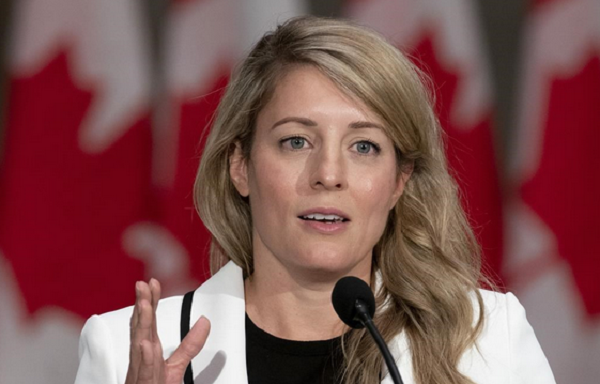Feds planning to overhaul its temporary foreign worker’s program
The federal government is looking to roll out a new temporary foreign worker regime starting next year that would add protections for workers and simplify the current program.
The new program would cover more year-round occupations in agriculture and food processing.
It would also allow migrant workers to change employers within the same industry, so they wouldn’t be beholden to a potentially exploitative workplace, according to a copy of the proposal obtained by the Star.
Under the proposal, the four existing worker streams would be reduced to two — for workers covered under bilateral agreements with their home countries and an “open-source” category for those from other places where there are no such government deals with Canada.
Canadian farm owners, fisheries and food processing companies have faced chronic labour shortages and must rely on the import of foreign workers to fill jobs that tend to be physically demanding, sometimes seasonal in nature, and located in rural and remote areas.
The pandemic underlined the importance of securing the country’s food supply chain, and exacerbated and exposed the poor working and housing conditions experienced by some migrant workers.
While the proposed changes could simplify the complex foreign worker program, advocates say they won’t necessarily better protect migrants’ rights.
“We have food because migrant workers work to feed us,” said Syed Hussan, executive director of Migrant Workers Alliance for Change. “Any new program must guarantee that migrant workers can protect themselves against exploitation and abuse, and that’s only possible if they have permanent resident status.”
The current streams each have their own set of program requirements and benefits, depending on the agricultural products and the countries the workers are coming from. Different rules apply in terms of whether a labour needs assessment is required and how long a worker can stay in Canada.
The streams currently include: the seasonal agricultural worker program (SAWP); primary agricultural stream; and low-wage and high-wage streams for agriculture positions. Although food, fish and seafood processing is part of the food supply chain and faces same labour challenges, employers in these sectors must hire foreign workers through the low-wage stream.
“The opportunity exists to improve Program coherence and consistency by adjusting policies to better reflect the changing nature of the agriculture sector and extending similar treatment to the seasonal fish, seafood and primary food processing sector, as well as renegotiating long-standing SAWP country agreements,” said the 20-page plan dated March.
“Canada’s objective is to develop a new agriculture and fish processing stream that leverages the strengths of the existing SAWP, but explores advancements in key areas.”
The plan was part of the 2022 federal budget, which committed $51.1 million over three years to implement a new foreign labour program for agriculture and fish processing, meant to “increase protections for workers and to reduce administrative burdens for trusted repeat employers.”
While details of the plan have to be finalized after consultation with employers, workers, community groups and foreign governments, the proposal says the key features are “likely” to include:
•Introducing sector-specific work permits that give workers job mobility within a sector for up to two years;
•Granting employers permits to hire workers to fill reoccurring seasonal work over a two-year period;
•Reforming the existing wage and deduction structure to better reflect current housing rates and employer costs;
•Updating employer-provided housing requirements to ensure greater protections and safety to workers.
The plan also assures agriculture and food processing employers that there continues to be no cap on the percentage of foreign workers at a worksite, and an exemption from the $1,000 processing fee for authorization to hire workers for farm work.
The new program will cover all seasonal and full-year positions carried out by migrant workers in agriculture as well as fish, seafood, fruit and vegetable processing sectors, representing 106,000 jobs requiring a labour market impact assessment in 2023. The assessment is meant to verify an employer’s need to hire a foreign worker to fill a vacant position.
In the coming months, Employment and Social Development Canada will start consultations while renegotiating long-standing seasonal agricultural worker agreements with sending countries that reflect the needs of Canadian employers.
Community consultation will focus on health-care provisions, wages and deductions, transportation, employer-provided housing and worker mobility; renegotiation of government agreements will include discussions about occupational expansion, consular support, pre- and post-arrival support services, information sharing and health-care provisions.
The proposal warned that the signing of country agreements that go beyond seasonal agricultural work will likely require amendments to Canada’s immigration law, which can take significant time.
“Should this be the case, Canada will work with source countries to explore the development of measures to support the entry of workers from Mexico and … Caribbean countries into these additional sectors, while the regulatory work is underway,” it said.
To minimize disruption to workers and employers amid the changes, Canadian officials will transition in phases to the new program, starting as early as 2025, before it is fully implemented in 2027. Details of the new program and transitional plans will be available this fall or early next year.
This article was first reported by The Star












